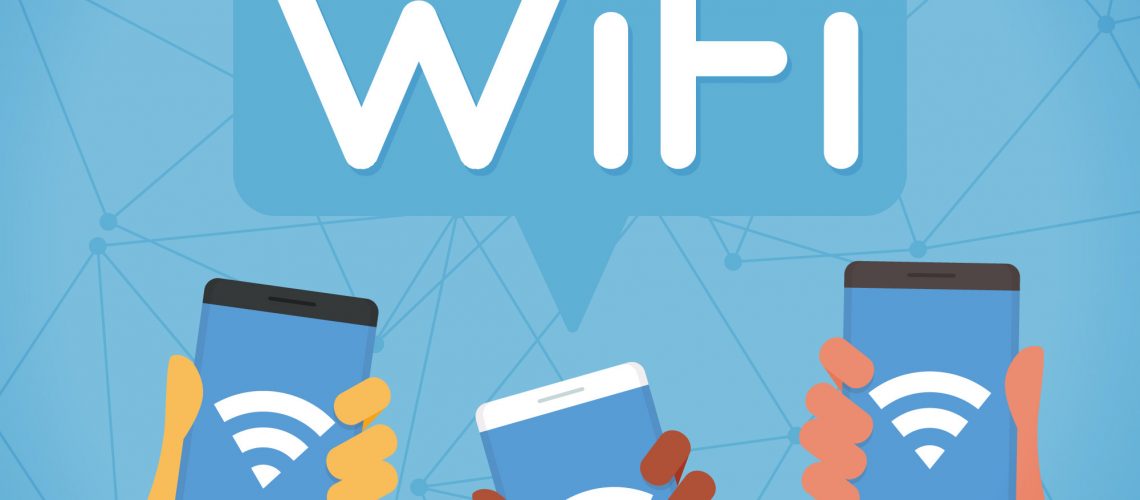Secure your home Wi-Fi from hackers :
- Security starts at home, Wi-Fi (Wireless Fidelity – Wireless Network) has made it so easy for anyone to use the Internet on our laptops, smartphones, tablets, and other IoT wireless devices anywhere in the house without the laying of LAN cables.
- In many cases, once a Wireless router has been installed, we will fix it in a place and forget about it once for all. All devices are set up and connected via the Wi-fi network and they working perfect, that’s doesn’t mean al the set up is perfect and fine.
- If the Wi-Fi is unmonitored and unregulated network anything can happen, an cybercriminal might exploit your poor Wi-fi security measures and “listen” to your traffic in order to retrieve sensitive information or take advantage of your network to launch malicious attacks such as Man-in-the-Middle attacks, network sniffing or even data theft.
Easy ways to identify if your Wi-Fi is either hacked or shared :
- There will be an increase your monthly Internet bill especially when you are on pay per use model.
- There will be a decrease in Internet speed, as you might be sharing the same internet connection with other users un-knowingly.
- Check the no of people or devices connected to your network on your router
Separate Connections for IoT Devices :
- Every house hold has smart TVs, smart fridges, Alexa and Google Home and other host of IoT devices at home. The more IoT devices, the more endpoints, and the greater the number of potential entryways for hackers and in most cases we have observed IoT devices have a poor security track record. It is suggested that you have a dedicated router and connection for IoT devices just in case you are able to afford it.
- With a separate dedicated network for IoT, you can eliminate the risks of poorly secured IoT devices acting as an opening for your main network. If someone hacks IoT network, all they’ll find is the other IoT devices, and they won’t be able to work their way onto your laptops or phones, nor could they steal or do a ransomware attacks on your data.
Use a VPN (Virtual Private Network) :
- A VPN is a network that allows you to communicate over an unsecured network in a private network mode. In a VPN Network hackers will not know what you are doing online and where you are located. A VPN will change your IP address, making it appear that you are using your computer from another location other than your home address.
- Most of the latest routers have inbuilt VPN option, So when you buy a router check for these options (a) Get a Router With VPN Capabilities or (b) Router That Supports DD WRT (c) Allows Other Third Party Firmware
Important tips to improve the Wi-fi security at your home :
- Change Router Password – The first and foremost thing you should do to secure your home Wi-Fi network is to change the default username and passwords, everyone knows that the default username and password of any router is “admin”. Make sure the passwords ate strong and unique passwords (Use capitals / numeric & special characters) and do not forget to change the passwords once in 2-3 months.
- Default IP address – Its highly recommended that you change the default IP address on your router. Remember your new IP Address , you’ll need to type the new IP address into the web browser to connect to Router.
- Change Network’s Name – The SSID (Wireless Network Name) of your Wireless Router is usually pre-defined to its “Routers Make and Model Number” and please don’t use your surname, pets name, or other personal information in the Wireless Network name.
- Activating network encryption – The most secure type of encryption to use for your home Wi-Fi network is WPA2. Older devices may not be compatible with WPA2, so it is suggested to upgrade your home devices for enhanced security and performance.
- Guest Network – Enable guest logins, when you plan to give to visitors or relatives who come home.
- Router On / Off – Turn off the wireless home network when you’re not at home for extended periods, in case of going for vacation or to home town.
- MAC address filtering – Your router will have an option “MAC address filtering” and this option will only allow approved devices onto your network.
- DHCP Functionality – Instead of Dynamic Host Configuration Protocol (DHCP), you should make use of a static address and enter your network settings. Please check with service provider for static IP.
- Remote Access – Most latest routers allow you to have remote systems. Its suggested to turn off the remote access as possibility of malicious actors may access your router’s settings from a device not connected to your wireless network.
- Hide your network – SSID hiding is a feature that will enable you to hide your network name. Employees working from home and working on critical financial, medical, tech and defence data are recommended to use this option of hiding the SSID and it will indirectly increase the possibilities your home Wi-Fi not getting compromised.
- Router firmware – The router’s firmware can contain vulnerabilities if not upgraded on a regular basis as the regular updates may contain security patches. Most routers won’t have the option of an auto-update so you’ll need to manually update the software to ensure your home Wi-Fi network is protected.



